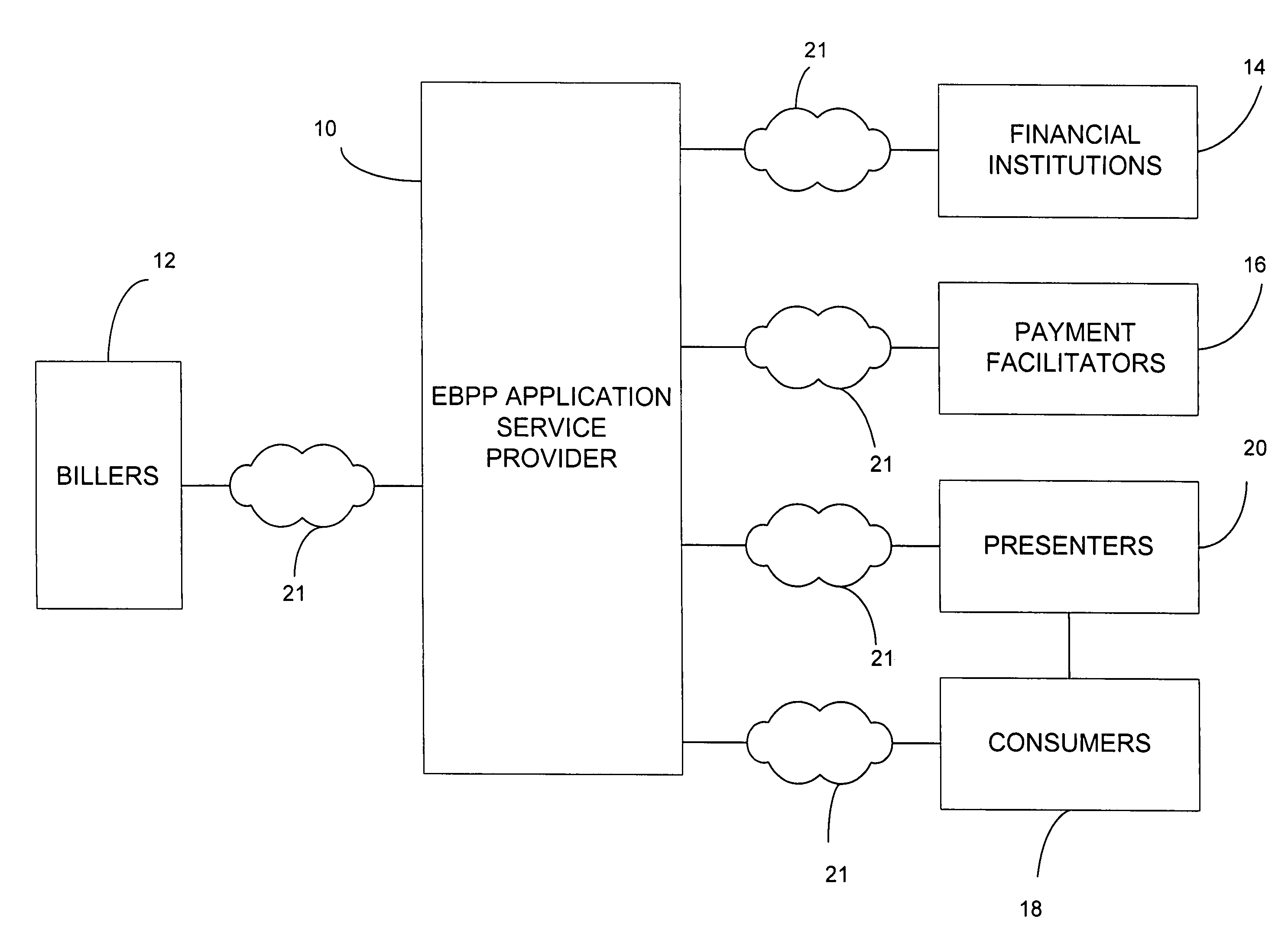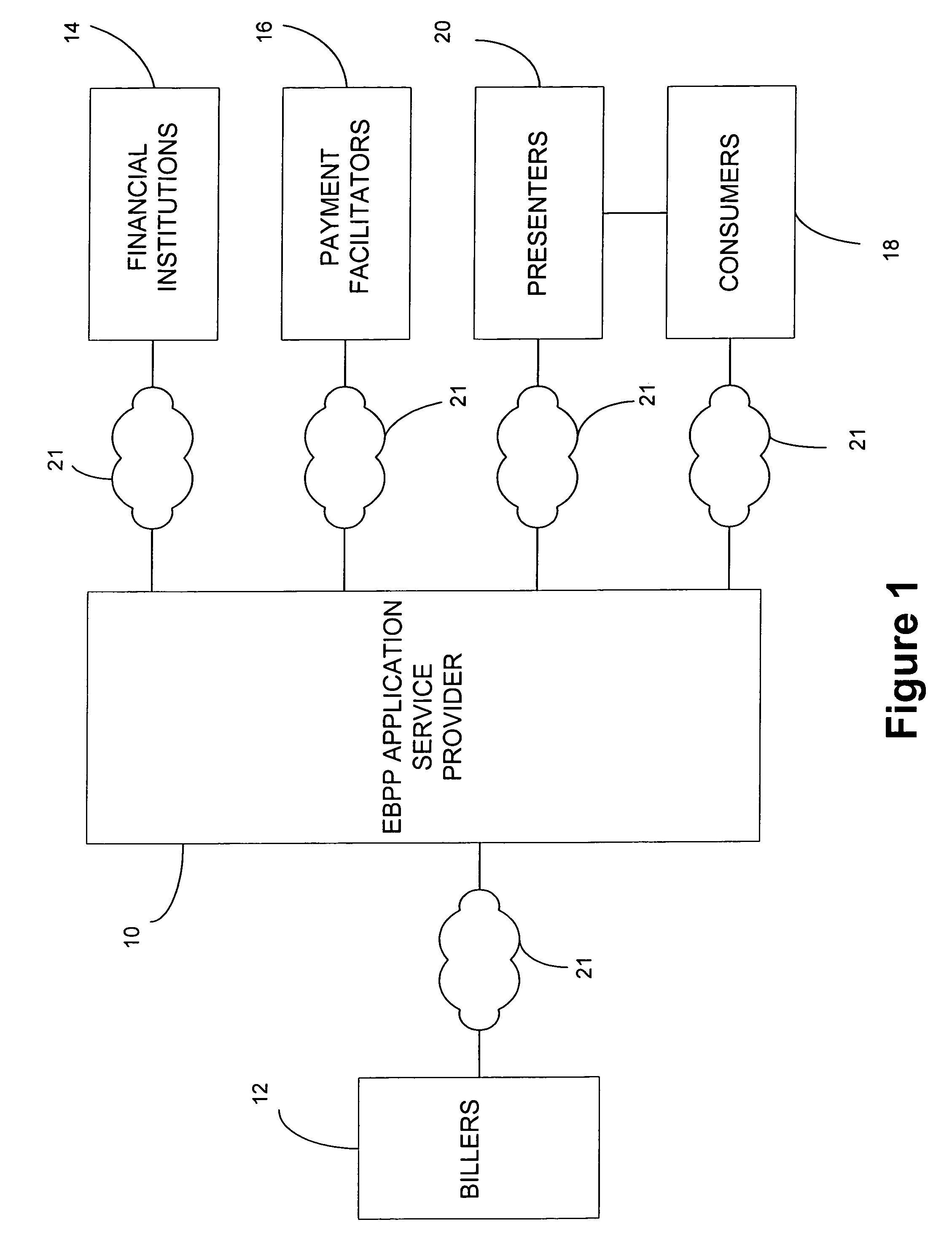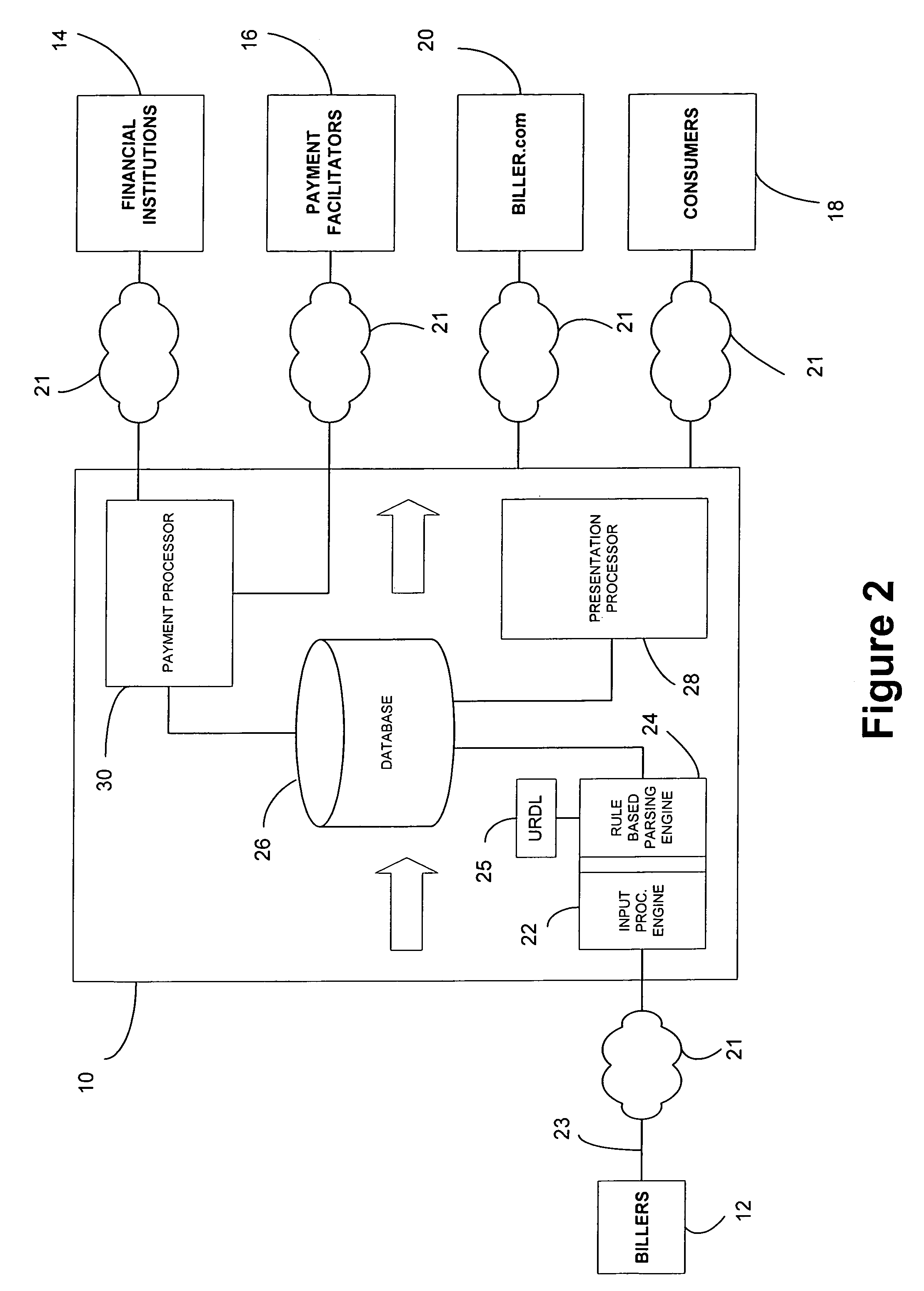Some people think dealing with bills is not fun.
Billers do not like having to create and send them and bill payers do not like paying them.
But billing consumers for goods and services has always been a necessary exercise and transaction cost of engaging in credit-based commerce.
Although as reliable as the postal system, conventional paper-based billing is expensive and gives the customer a significant float thus depriving the biller of the time value of money.
Much of this expense stems from the cost of materials, printing, postage, and manual
processing of the paper bills, inserts and envelopes.
The time
delay associated with
paper based billing can be particularly vexsome to small billers and non-recurrent billers who tend to rely more heavily on cash flow.
Although many paper billers include various types of marketing inserts with their bills in an attempt to use the billing activity as an additional opportunity to build brand and customer relationships, those materials cannot be targeted as effectively as in an interactive session.
For instance, billers do not have significant realistic control over the circumstances under which, or whether, a
consumer views particular inserts.
Nothing is free, however, and there are costs associated with moving from paper-based billing to EBPP.
EBPP in any event presents significant hardware,
software, security and storage issues, as well as significant human resources issues.
Outsourcing these issues is a viable alternative for an organization that does not desire to custom build a proprietary EBPP function or whose size or economic base does not cost justify such an in-house solution, but outsourcing always sacrifices control of the system, of where and how the bills are presented, and over the potential to build brand and customer relationships through the billing process.
In short, across the
population of various types of conventional EBPP architectures and systems, there is always a tradeoff between complexity and control over the process.
In-house systems tend to be complex and expensive, but give maximum real
time control over the process.
However, this type of solution is expensive.
Not only is it a technology risk because billers lose the flexibility to adapt to other EBPP standards, but it also requires a substantial commitment of manpower, infrastructure and consultant resources for planning, development and implementation.
Among other things, merely obtaining a
license to run the
relational database application for managing billing information is often viewed as prohibitive, especially for smaller billers.
Furthermore, such systems innately discourage
consumer use or popularity, since the
consumer is required to log onto and initiate a session on a separate site, with different passwords and different logon procedures, for each different bill the consumer wishes to pay.
However, because the information contained in the paper bills is not extracted from the document, billers are unable to perform any useful
processing of the electronic bill or apply any marketing or business rules other than merely electronically presenting the bill and accepting payment.
For instance, the biller is not able to query a
database and obtain a report of all bills with a balance over $40.00.
Reports cannot be prepared for the biller to show aging or other information about status of bills.
Thus, although the front-end rendering approach does enable billers to perform certain
load time decisions and rules, it tends to create a static rather than dynamic set of data with concomitant limitations.
Because this EBPP paradigm merely shoots a snapshot at
processing time, billers cannot make modifications to the electronic bill at the time of presentment, for example.
It cannot create and use various report and view formats via which to view and operate on the billing data stored in the
database.
It cannot create and set permissions for access to and processing of such data.
In addition to loss of control of this sort and other sorts, the front-end rendering approach is expensive due to substantial implementation costs and because it requires the use of multiple application program interfaces to
handle the
electronic billing data.
A central reason for loss of control of data once the biller
stream has been parsed is that the biller-side data has not been decoupled sufficiently from the presentment-side data.
Not only does interposition of the consolidator and its interface between billers and consumers interrupt any existing relationship and potential to build brand, but it also precludes exploitation of new biller opportunities to interact with consumers.
In addition to the problems already mentioned, existing EBPP systems and processes have various other disadvantages.
For example, they remain an expensive option for most billers who lack sufficient economies of scale necessary to overcome the high fixed cost of implementation.
These EBPP methods, which primarily focus on reducing biller costs, also often fail to address the issue of consumer convenience adequately, much less to provide effective incentives for consumer adoption.
Furthermore, conventional EBPP approaches often require redundant resources supported by multiple entities and consequently
waste processing and transport resources.
 Login to View More
Login to View More  Login to View More
Login to View More 


